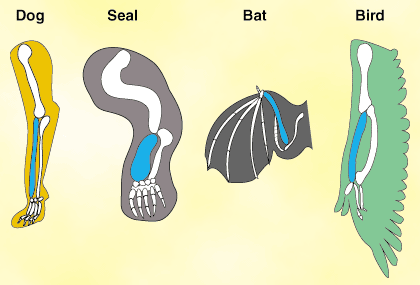Please wait while we process your payment
If you don't see it, please check your spam folder. Sometimes it can end up there.
If you don't see it, please check your spam folder. Sometimes it can end up there.
Please wait while we process your payment

By signing up you agree to our terms and privacy policy.
Don’t have an account? Subscribe now
Create Your Account
Sign up for your FREE 7-day trial
By signing up you agree to our terms and privacy policy.
Already have an account? Log in
Your Email
Choose Your Plan
Individual
Group Discount
Save over 50% with a SparkNotes PLUS Annual Plan!
 payment page
payment page
Purchasing SparkNotes PLUS for a group?
Get Annual Plans at a discount when you buy 2 or more!
Price
$24.99 $18.74 /subscription + tax
Subtotal $37.48 + tax
Save 25% on 2-49 accounts
Save 30% on 50-99 accounts
Want 100 or more? Contact us for a customized plan.
 payment page
payment page
Your Plan
Payment Details
Payment Summary
SparkNotes Plus
You'll be billed after your free trial ends.
7-Day Free Trial
Not Applicable
Renews April 12, 2025 April 5, 2025
Discounts (applied to next billing)
DUE NOW
US $0.00
SNPLUSROCKS20 | 20% Discount
This is not a valid promo code.
Discount Code (one code per order)
SparkNotes PLUS Annual Plan - Group Discount
Qty: 00
SparkNotes Plus subscription is $4.99/month or $24.99/year as selected above. The free trial period is the first 7 days of your subscription. TO CANCEL YOUR SUBSCRIPTION AND AVOID BEING CHARGED, YOU MUST CANCEL BEFORE THE END OF THE FREE TRIAL PERIOD. You may cancel your subscription on your Subscription and Billing page or contact Customer Support at custserv@bn.com. Your subscription will continue automatically once the free trial period is over. Free trial is available to new customers only.
Choose Your Plan
This site is protected by reCAPTCHA and the Google Privacy Policy and Terms of Service apply.
For the next 7 days, you'll have access to awesome PLUS stuff like AP English test prep, No Fear Shakespeare translations and audio, a note-taking tool, personalized dashboard, & much more!
You’ve successfully purchased a group discount. Your group members can use the joining link below to redeem their group membership. You'll also receive an email with the link.
Members will be prompted to log in or create an account to redeem their group membership.
Thanks for creating a SparkNotes account! Continue to start your free trial.
We're sorry, we could not create your account. SparkNotes PLUS is not available in your country. See what countries we’re in.
There was an error creating your account. Please check your payment details and try again.
Please wait while we process your payment

Your PLUS subscription has expired
Please wait while we process your payment
Please wait while we process your payment

Before Lamarck
For much of history, the idea of evolution did not exist. Short-term observations of the natural world showed that while there was a great diversity of living things, they generally stayed the same generation after generation. As people became curious about how this came to be, some different theories took shape.
Creationism is a belied about the origin and development of life based on a literal reading of the Book of Genesis. According to this text, God created all animals individually and simultaneously. All animals were created in forms perfectly suited to their environments and purposes in the natural world. This mass creation event was believed to have occurred about 6000 years ago. Prior to the scientific discoveries of the past 200 years, creationism seemed to correlate well to observations of the natural world. In the short span of written history, species did not seem to change, but rather seemed to have fixed forms that were indeed well suited to their environments. The scientific world also generally believed that the universe itself was relatively young, lending support to the Genesis timeline.
About 200 years ago, however, several ideas about the natural world began to change. Sceintific estimations of the age of the earth began to extend into the millions of years. Fossilized bones of animals never before seen were unearthed. These and other types of evidence cast doubt on creationism, leading scientists on a search for a new explanation that would eventually bring Lamarck and Darwin to create their theories of evolution. These lines of evidence are still used today in the study of evolution and are discussed in evidence of evolution. It should be noted that while the scientific community has quite rigorously dismissed creationism as a credible description of the origins and development of life, it still has strong adherents to this day.
An important step toward the modern theory of evolution came in the 1760's, when Count George-Louis Leclerc de Buffon (1707-1788) published his Natural History of Animals. In this treatise, Buffon described the similarities he found in the limb bones of very different animals. For example, he noticed that dogs had bones in their legs similar to those found in flippers of seals, though the two structures were used in entirely different ways. He found that pigs had toes similar to those of other mammals, except that they did not touch the ground. These observations led him to propose that these animals had not been created as they then appeared, but rather that modern animals were modified forms of a common ancestor. Buffon's idea that species change over time has become the cornerstone of the modern of evolutionary theory. His technique of comparing similar structures across different species, called comparative anatomy, is used today in the study of evolution and is discussed in evidence of evolution.

While Buffon's observations led him to conclude that species did in fact change over time, he was unable to propose a mechanism by which this change occurred. This question would have to wait for a student of Buffon, Jean-Baptiste Lamarck, whose answer is discussed in the next section.
Please wait while we process your payment

